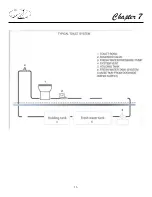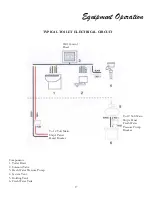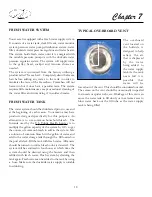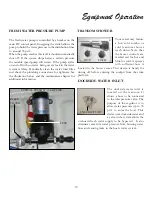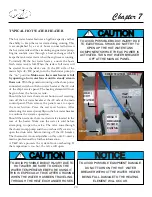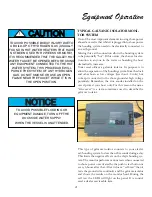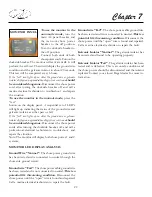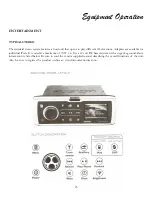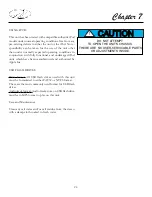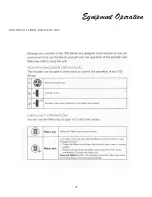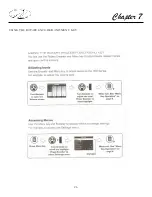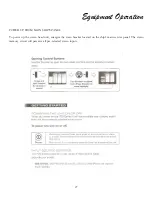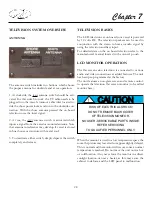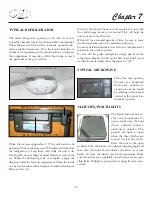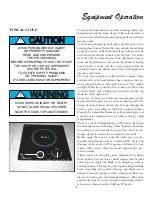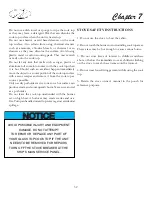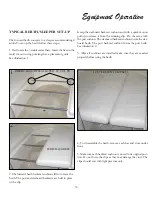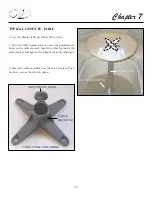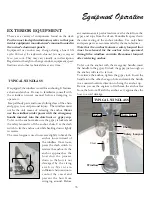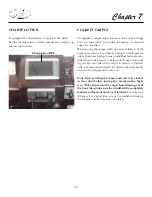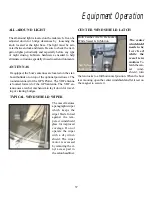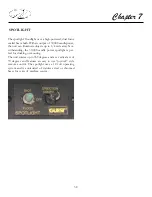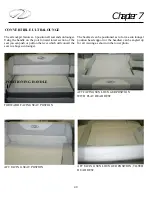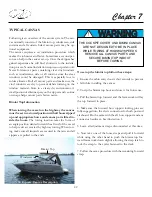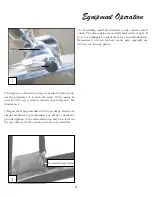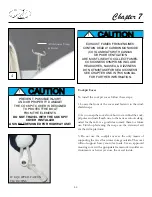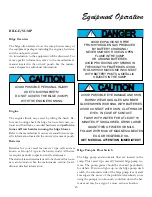
30
Chapter 7
Latch
TYPICAL REFRIGERATOR
The cabin refrigerator operates on 12 volts. It is con-
trolled by a breaker located on the main DC control panel.
The refrigerator is fitted with a manually operated, infi-
nitely-variable thermostat. Turn the knob clockwise to
reduce the temperature and counterclockwise to increase
the temperature. It may take a little fine tuning to reach
the particular setting you desire.
When the ice layer approaches 1/8” the unit needs to be
defrosted. Turn the thermostat off. Transfer all items from
the refrigerator to keep them cold while the unit is de-
frosting. Do not use sharp or metal objects to remove the
ice. When the defrosting cycle is complete, empty the
drip pan under the freezer compartment. Clean the inside
of any food residues with a damp cloth and a mild cleaner.
Rinse and let dry.
Turn the thermostat back on and restock the unit with
the cold storage items you removed. This will help the
unit cool down much faster.
When left for extended periods of time, be sure to leave
the door partially open for ventilation purposes.
For more detailed information, refer to the manufacturer’s
manual in the owner’s pouch.
To turn off the galley refrigerator simply deactivate the
refrigerator breaker switch on the DC main ship’s panel
or turn the knob inside the refrigerator to “off ”.
HATCHES/PORTLIGHTS
The hatch features remov-
able screen/sunshades. To
open a hatch, turn the hold
down adjuster counter-
clockwise to unlock it. This
permits the hatch to open
when the three latches are
turned to clear the hatch.
Press the lock to the open
position. Push the hatch to the desired opening angle and
then turn the hold down adjuster clockwise to secure
hatch. To close the hatch, reverse the procedure. Make
sure the latches are completely closed to prevent any pos-
sible leaks. Portlights open and close using the same pro-
cedure.
TYPICAL MICROWAVE
Since this unit operates
the same as a household
microwave, specific in-
structions can be found
by referring to the manual
located in the owner’s in-
formation pouch.
MANUAL THERMOSTAT
SHOWN IN LOCKED POSITION
PULL UP TO OPEN DOOR
Summary of Contents for 30 EXPRESS
Page 1: ...30 EXPRESS OWNER S MANUAL...
Page 2: ...784022 OWNER S MANUAL 30 EXPRESS 12 2012...
Page 30: ...11 Safety On Board NAVIGATION LIGHT RULES...
Page 41: ...Chapter 2 22 Notes...
Page 44: ...3 Rules Of The Road NAVIGATION RULES...
Page 85: ...28 Chapter 5 Notes...
Page 105: ...4 Chapter 7...
Page 106: ...5 Equipment Operation...
Page 107: ...6 Chapter 7...
Page 108: ...7 Equipment Operation...
Page 109: ...8 Chapter 7...
Page 110: ...9 Equipment Operation...
Page 111: ...10 Chapter 7...
Page 117: ...16 Chapter 7...
Page 126: ...25 Equipment Operation ROTARY ENCODER AND MENU KEY...
Page 127: ...26 Chapter 7 USING THE ROTARY ENCODER AND MENU KEY...
Page 158: ...57 Equipment Operation BACKING A TRAILER 1 2 3 4 LAUNCHING RAMP...
Page 161: ...60 Chapter 7 Notes...
Page 195: ...34 Chapter 8 Notes...
Page 204: ...9 Troubleshooting TOILET SYSTEM DIAGNOSTIC CHART...
Page 209: ...14 Chapter 9...
Page 219: ...6 Chapter 11 Notes...
Page 221: ...2 Chapter 12...
Page 224: ...5 Technical Information 30 Express Deck Overview 30 Express Cabin Overview...
Page 225: ...Technical Information 12 6 30 EXPRESS...
Page 226: ...12 7 Technical Information 30 EXPRESS...
Page 227: ...Technical Information 12 8 30 EXPRESS...
Page 228: ...12 9 Technical Information 30 EXPRESS...
Page 229: ...Technical Information 12 10 30 EXPRESS 30 EXPRESS...
Page 230: ...12 11 Technical Information TYPICAL NEGATIVE GROUND SYSTEM...
Page 231: ...Technical Information 12 12 30 EXPRESS...
Page 232: ...12 13 Technical Information 30 EXPRESS...

